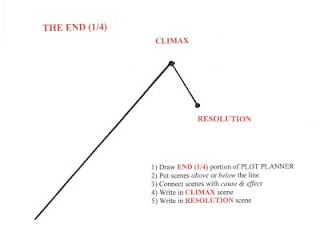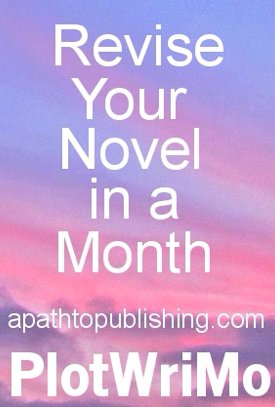Watch your delivery of backstory ~ the story of what, in the past, made the character who they are today (in story time).
Writers want to cram everything right up front.
"I know all their history, why would I want to withhold it from the reader?"
"I wrote it that way."
"It's the good part."
Writers spend lots of time imagining and writing every little detail about a character's past, be it for a child or an adult. So, of course, writers would want to tell everything right away. Perhaps, in the process, even show off a bit how clever they are. Until, one understands how curiosity works.
Not telling everything makes the reader curious. Curiosity draws the reader deeper into the story world. The reader wants to fill in the "who," "what," "how" (the "where" and "when" have already been clearly established right up front to ground the reader). They keep reading. This is good.
Tell the reader only what they need to know to inform that particular scene. This is especially true in the Beginning (1/4 mark). During the first quarter of the project, the character can have a memory. But, for a full-blown flashback, where you take the reader back in time in scene, wait until the Middle.
(PLOT TIP: If you're absolutely sure you absolutely have to include the flashback, try using one when you're bogged down in the middle of the middle.)
Click on green highlighted plot concepts for further explanations via video. Each time a concept is referenced you are directed to new information about the Universal Story and writing a novel, memoir or screenplay.
Visit Plot Series: How Do I Plot a Novel, Memoir, Screenplay? on YouTube. A directory of all the steps to the series is to the right of this post. Enjoy!
Thanks to the plot consultations I do with writers from all over the world, the plot workshops and retreats I’ve taught and the novels, memoirs and screenplays I've analyzed, I have come to believe that every scene in every book is part of a Universal Story that flows throughout our lives, both in our imaginations and in the reality that surrounds us.
Every story ever told participates in this universal pattern as words grow and expand into sentences, paragraphs, and chapters. What is left after the end of the story has the potential to transform not only the writer but all those who read the story as well.
I teach the Universal Story to writers through plot. Though difficult to accomplish successfully, plot is critical to stories. As I continue to teach and write and consult, I gain new insights into plot . . . and into writers’ lives.
You bring to your writing, your art, and your stories a piece of yourself. In return, the act of creating gives you the possibility of something even greater: true transformation.
The better your understanding of how to integrate the energy of the Universal Story into your story, you come to understand yourself better. You begin to see your writing in a different light. The ways you interact with your writing and with the world around you shifts.
Be forewarned, though. Writing a story can expand your everyday life; it can also destroy the person you are now. Commit to your own journey as your protagonist embarks on hers. Explore your true essence. Whether you emerge from the experience better or worse is your choice. But I believe the act of writing offers you the possibility of transformation.
Your imagination allows you to see worlds invisible to others. Imagine the Universal Story into reality and reclaim a miraculous and mysterious way of being.
From the hundreds of novels, memoirs and screenplays I have analyzed for plot workshops and plot retreats for more than twenty years and as I complete the final, final edit -- well, there is still the galleys to come, but still..., on the Plot Whisperer book (the cover is up on Amazon and the book ready for pre-order!), I have come to appreciate that beneath every great story beats the Universal Story.
Creative writers hate to be reined in and limited by an imposed set of generally accepted plot standards on their stories, crying out that they will be come stifled and their stories cookie-cutter.
Might I suggest instead, to see that in writing with the Universal Story, your creativity and own unique voice has a place to light, to flow into, and you will more likely stay focused and achieve that long-term goal of yours to finish your story.
 For those of you more literary minded, 3rd Annual International Plot Writing Month is not an attempt to establish literary rules and regulations. Far from it. Nor, do we want to rob you of the riches of your minds and souls. Quite the opposite.
For those of you more literary minded, 3rd Annual International Plot Writing Month is not an attempt to establish literary rules and regulations. Far from it. Nor, do we want to rob you of the riches of your minds and souls. Quite the opposite.
In completing the first draft of your screenplay, memoir, or novel, you likely encountered countless ambiguous and difficult elements, all of which, no doubt, spurred you yet closer to finding your true voice of creativity and expression. Yet, even within the catalyst for creative production that we all desire, some structure and guidelines often prove helpful.
THE END: TRANSFORMATION
The End (final 1/4 of the story) is made up of more than the Climax (which we covered Day Nine). When you followed the assignment for Day Eight, I trust you were able to remember and plot out scenes from this final section besides just the Climax.
Yes, the
Climax is the crowning glory and it really deserves more than one day, but it is time to move along.
Steve Jobs, co-founder of Apple, said at a commencement speech: "You can't connect the dots looking forward; you can only connect them looking backwards. So you have to trust that the dots will somehow connect in your future."
Your job as writer is to connect the dots. And, because you know the future -- the Climax -- you do not need to rely on trust. You can actually connect the dots.
Work backwards from the Climax -- which is the moment when the protagonist finally stands firmly in her power, stands up to her greatest fear or confronts the thing that has beat her up spiritually. The scenes in the final 1/4 of the project lead up to the Climax.
As you see,
the line ascends quickly. The scenes you plot here serve primarily to advance the protagonist to the Climax. Nothing new can be introduced, no pontification or philosophizing. The reader does not want the story to end, but they can not stop reading. They have to know what happens. Keep things moving.
Yes, the Climax spotlights the character in full transformation as she demonstrates
the necessary new skill or personality, gift or action, but the scenes that build up to the Climax show us the transformation unfolding step-by-step. The reader lives the experience with her. Together the protagonist and reader moves closer and closer to her goal, firmly aware that she had to experience everything she did throughout the entire book to get to this final stage --
 If you are joining us for the first time, please scroll down to Day One. The reason I do not provide a "hot" link to the post is because doing so will take you only to that day's post and you want to work your way through all past seven posts to catch up.
If you are joining us for the first time, please scroll down to Day One. The reason I do not provide a "hot" link to the post is because doing so will take you only to that day's post and you want to work your way through all past seven posts to catch up.
What we are doing here at the 3rd Annual International Plot Writing Month is dry and analytical compared to the magical and mystical process of writing the first draft. However, processing your story through your intellect and analyzing it wipes away befuddlement and leads to clarity of character goals and motivation which in turn helps to create convincing expression and emotion.
The work we do here, like the plot workshops I teach, is divided between explanation and time for development of the THREE MAJOR PLOT LINES for your individual project. For the sake of convenience, the explanation here gives independent consideration to the dramatic (action), emotional (character development), and thematic aspects of story, but keep in mind that all aspects of a successful writing project must become integrated into the total structure to create its unity, and that achieving this unity is the goal of every writer.
Today is two-pronged:1) Organize
If you haven't already, print out your manuscript. Do NOT read it. Be sure to include a header on every page with your title in caps / name on the upper left and the page # on the upper right.
Don't worry about spell checking or chapter breaks. just make sure the pages are numbered.
Insert your project into a binder. [Warning: printing manuscript is a snap compared to hole-punching the pages. However, it's important to have the manuscript bound and in one place.]
Divide the total number of pages in the binder by 4. Stick a post-it note at the 1/4 mark and another one at the 3/4 mark.
Put the binder away, for now.
Gather all the extraneous notes you may have generated during the writing of the rough draft that you have not yet integrated into the piece and the notes you have generated thus far during PlotWriMo. Divide the notes and stick them into file folders labeled Beginning (1/4), Middle (1/2), End (1/4). Straighten up your desk. Purge everything you can that you accumulated while writing the rough draft. Put things in order.
You're entering a new phase. Time to cleanse and prepare to step into the next draft.
2) Plot THE END: PART ONE
Pull out your index cards or paper or whatever works for you. Keep the
BEGINNING and�
 Today, your assignment, if you choose to say yes, is to carry your Plot Planner index cards and a pencil or pen with you everywhere.
Today, your assignment, if you choose to say yes, is to carry your Plot Planner index cards and a pencil or pen with you everywhere.
I see you standing in line at the post office and the grocery store serenely grateful for the wait because it allows you more time to ponder your story. I see you waiting in the dentist's office or in thick traffic with your eyes up and to the left glazed over as inspiration fills you. I see you unplugging from negative thoughts about that nasty brother-in-law coming for dinner and plugging into your story instead.
- Story is all about character transformation. How has your protagonist been transformed by the Dramatic Action in the story?
- What is your story really saying? What do all those words you wrote add up to?
- Your story is a reflection of a truth. Not necessarily true for all time, but true for the story itself, and likely for yourself, too. What is the deeper meaning? The truth beyond the physical?
- How do the three major plot lines contribute to the overall meaning of the story?
- How do the secondary plot lines support the major plot line thematically?
- How do the secondary characters' journeys mirror the protagonist's journey?
- Does the setting in the ordinary world and the setting in the exotic world support the theme?
- What elements in the Beginning (1/4) echo back in the End (1/4)
Jot down whatever comes to you on the back of your Plot Planner.
To proclaim 3rd Annual International Plot Writing Month in December and not mention the holidays is like standing mute in a room filled with angels and trolls. In our zeal to capture the holidays just right we run ourselves ragged. Part of this impulse is running from the darkness as the days turn shorter and shorter. It echoes back thousands of years to our fear that the failing light would never return without our intervention.
Fitting in writing time becomes more and more impossible as we await the rebirth of the sun and as the year winds down. Instead of fighting what
 Writers Plot Retreat took place in the Santa Cruz Mountains in Northern California
Writers Plot Retreat took place in the Santa Cruz Mountains in Northern California
Easy access to San Jose airport


 Gorgeous private home on 25 acres of redwood forest
Gorgeous private home on 25 acres of redwood forest
 We make up stories in our minds about events in our lives. Are the stories real? Only real to us and only as far as our perception is capable of seeing at the time. The stories we tell ourselves to make sense of the world around us have a direct impact on how we react to new events in our lives.
We make up stories in our minds about events in our lives. Are the stories real? Only real to us and only as far as our perception is capable of seeing at the time. The stories we tell ourselves to make sense of the world around us have a direct impact on how we react to new events in our lives.
That is the only explanation I have for why one writer is slain by the antagonists that pop up in the middle of her writing journey. While, another writer faced with the exact same problems is able to effortlessly make her way forward.
Or, perhaps, the answer lies in the understanding one has of the task itself.
The writer who is slain may have heard rumors about the meddlesome, messy, sagging middle but when confronted with the reality of writing her way through the middle, takes the challenge personally, surrenders all her power and gives up (either for the day or for months or even years).
Another writer has researched not only the setting and authentic details needed for her story but also the craft of writing itself enough to understand that the antagonists that arise in the middle are not to be feared or felled by but part of the process itself.
I'm not explaining myself well here and the reason could be because this more informed writer is an anomaly to me. She has only been writing for two years and is well beyond the halfway point to creating a compelling novel. Though slowed down by the antagonists in the middle, rather than create resistance by judging herself as the problem and throwing herself against the wall or curling up in a ball for years before seeking help, she reaches out almost immediately and is now off and flying again.
Replace the story you tell yourself about writing the middle of your novel, memoir, screenplay from one of threat and opposition to a story of strength and determination. Antagonists are self-created and have power over you only so long as you give away your own personal power first.
 Beginnings hook readers. Endings create fans.
Beginnings hook readers. Endings create fans.
The other night when talking about readers with a writer friend, she interrupted to comment that she did not believe many writers consider their ultimate readers when writing a story. She went on to say that most writers she knows spend most of their time perfecting the beginning and usually peter out at the end.
The next day I received an email from a mighty disappointed agent friend who had just finished a 400 page manuscript she was SO hopeful for and realized "in the last 60 pages or so there must be a book in there, somewhere," but not in the shape she needs it to be.
How many of you do endings well? Not just with your stories but in other aspects of your life, too. Ending a relationship. The end of a visit. The end of any phase. Often, we just let things peter out...
All that to say, a friend and prolific writer, Penny Warner, has a terrific blog post about beginnings. Check it out. (NOTE: I just realized all the mystery writers who make up The Lady Killers are blogging about beginning. Penny's post is on May 12th)
Martha Alderson, AKA the
Plot Whisperer, posted a great definition of plot on her blog this past week. In and of itself, that might not seem too exciting. But I loved the way she did it, by gradually adding to the definition in a way that mirrors how many of us writers approach a story. She began with plot as a series of events:
Plot is a series of scenes that show outward action.
And ended with plot as the core of a well-developed novel:
Plot is a series of scenes deliberately arranged by cause and effect to create dramatic action filled with conflict, tension, and suspense to further the character’s emotional development and create thematic significance.
As she added to the definition, she explained the significance of each story element. I particularly loved that she included thematic significance as part of the plot. It is so often overlooked, or tacked on, but when done well it is the unifying force that weaves everything in the plot together. In effect, it is what makes a great novel great. The Plot Whisperer points out, "It is the main thrust of your presentation and what you hope to prove through your story. The theme is the why: what you want your audience to take away after having read your story."
Read the full article:
http://plotwhisperer.blogspot.com/2010/04/definition-of-plot-for-writers.htmlHappy plotting,
Martina
 Go only where you feel cared for and supported; where everyone sees you as perfect.
Go only where you feel cared for and supported; where everyone sees you as perfect.
How are you doing in that department when it comes to you and your writing? Do you care for yourself enough to show up for your writing? Are you supportive of your passion for writing? Do you see yourself as perfect? Do you see your work as perfect?
The relationship we have with our writing is reflective of our relationship with ourself.
- Daily show up for your writing
- Light a candle
- Ask for guidance and support
- Begin writing
- Quit writing before you begin to lose energy for what you are doing, before you begin to trash talking your work, before you despair. Quit while you're still in the flow, feeling good about yourself and the process of creating something out of nothing on the page
- Blow out the candle
- Ask the smoke to take your thanks and gratitude for your writing to the source of all creation
Our stories represent a deep and passionate calling.
Begin a new relationship with yourself as a writer.
 Listen to yourself. Write the way that feels right to you.
Listen to yourself. Write the way that feels right to you.
Often comments from others are more an indication that something needs work. In our zeal to support our fellow writers, we come up with all sorts of solutions. However, what's most important is to know something isn't working and for you to come up with what is the best fit.
I just don't want you to get into trying to please everyone else.
Most important is your relationship to the story.
The story will tell you everything you need to know.
Ask the story what is best and then listen...
 Last Saturday I taught the 1st in a series of 3 Plot Intensives in Capitola, CA. I covered plot at the overall story level. This Saturday I teach the 2nd plot workshop to cover plot at the scene level. Next Saturday I teach the 3rd and final workshop; Plot for Meaning at the overall plot level.
Last Saturday I taught the 1st in a series of 3 Plot Intensives in Capitola, CA. I covered plot at the overall story level. This Saturday I teach the 2nd plot workshop to cover plot at the scene level. Next Saturday I teach the 3rd and final workshop; Plot for Meaning at the overall plot level.
Saturday for the first time I asked writers to fill out the
Character Emotional Plot Profile for more than just their protagonist and antagonist. This time, they also filled out one for themselves as a writer and another for themselves personally.
I felt a bit weird about asking for their own personal profile and after glancing at a few, I knew for certain I won't do that again. I don't need to know a person's secrets to help her with plot. However, the writers' profiles were fascinating in their universality.
Everyone wants to write a story and everyone suffers from the same doubt, insecurity, fears which begs the question: if a writer stands back and analyzes where she is on her writing journey, will it help her as much as standing back and looking at the overall plot of her writing story on a
Plot Planner?
You tell me.
Where are you on your writing journey?
- Still in the introductory mode (Beginning - 1/4) and mostly talking about writing, how you're not writing, what you want to write about, thinking about writing, wanting to write but don't very often?
- Stepped over into the land of the exotic and solitary world of writing filled with antagonists of every kind (Middle - 1/2)?
- Clawing your way to the Climax (End - 1/4)
Does your answer surprise you?
Does the understanding of where you are on the Universal Story form or your life's journey give you a deeper understanding of you are in relationship with your writing?
Does it give you a deeper understanding of the journey your protagonist is on, too?
 Not every writer I work with admits to her flaw(s) but many do. The more prevalent flaws I encounter operate exactly like the protagonist's flaw in a story = the internal flaws of feeling not good enough, smart enough, or producing enough do more to sabotage the writer (and protagonist) from achieving her goals than any outside antagonist ever can.
Not every writer I work with admits to her flaw(s) but many do. The more prevalent flaws I encounter operate exactly like the protagonist's flaw in a story = the internal flaws of feeling not good enough, smart enough, or producing enough do more to sabotage the writer (and protagonist) from achieving her goals than any outside antagonist ever can.
Writers who have labored for years start when hopeful and stop when fraught with insecurity and fear (both of success and of failure). They do this over and over again. Sadly what often happens as they strive for their dreams with perseverance and determination is only to give up in the end.
Then there are the writers who find strength and determination not within their own personal power but with drugs and alcohol. These writers concern me the most because of my own demons I have struggled with over the years.
These writers often start when sober and stop when the drugs and alcohol become more important than the writing. Often what triggers the angst is the writing itself. In supporting these writers through a writing project I am always asking myself if what I am doing is helpful or even healthy for an addict.
Heavy-duty addicts in my experience are generally too sensitive for the world around them and they believe that being numb is the only way they can deal with life. In guiding these writers deeper into their writing projects, we wade deeper and deeper into the pain that first brought on their self-abuse through drugs and alcohol.
Recently one writer kindly wrote to me: You keep coming up with new ways to help us poor struggling writers.
I try, yet still after all these years and all these writers I have worked with, I have not found a way to help a writer write about their nightmares without having them relive the pain as they write. Yes, if the writer can slog through the Middle and survive the Crisis, they come away not only better writers for it, they come out stronger in their own personal lives as well.
My only saving grace is the confidence I hold in the writers I work with and all those of you out there I will never have the honor of helping that you are better than the addiction and that you are strong enough to find solace in leaving the drama on the page.
 Cause and Effect
Cause and Effect
Using the master Plot Planner you created on
Day Twenty-Five, now draw a line from one scene to the next when they are linked by cause and effect. In other words, if the action in one scene causes the action in the next scene, draw a line to connect the two of them. Continue that way through every scene.
Where one scene does not cause the action in the next, do not connect the two scenes with a line. Leave them blank.
Three days left and counting...
 The Middle
The Middle
Following are several posts that deal with the Middle (1/2). My hope is that they may stimulate more insight about what works in your Middle and where you might put a bit more attention.
The Middle
Crisis
Crisis
The Middle
Consider the Reader
 You're itching to get back to writing, aren't you?
You're itching to get back to writing, aren't you?
All you wordsmiths out there, patience. This analytical work is counter-intuitive for most creative types. But trust me. The more you stick with it now, the better your next draft. Plus, I want you eager for the word and sentence and paragraph level. That way, the odds of you sticking to the writing schedule in '10 you create for yourself at the end of this month improve.
Besides today is Winter Solstice. This is the time to release old beliefs and objects that do not fit you anymore. This includes scenes and chapters your story doesn't need either. Any scene -- energy -- that does not line up with the story's deeper meaning, release it to the universe and it will go to a better place (perhaps your next story).
The 1st draft often produces quality of a lower vibrational level than subsequent drafts. The more you purge now, the more space your story has to receive that which serves the work best.
As we release the unneeded words and phrases and sentences and paragraphs, our stories embrace a new identity. With that comes a new higher and more vibrant and dynamic meaning.
The more you line your story up with the correct material, the faster the story will create.
Think of what we're doing now as the anticipation stage. The main event is writing the next draft.
Remember, in an earlier post, when I talked about the three ways to create more emotion in your story:
- Anticipation
- The main event
- Reaction
Character anticipation creates reader anticipation and often represents the strongest emotional stage. I want you prepared and excited when the time comes for you to embark on your next draft.
The Middle (1/2)
I love the Middle of stories. By the Middle, I've committed to the story. I know nothing too terribly awful will happen for awhile -- at least not as awful as I know will come later -- and I can sink into the story world itself, hang out with the characters, and get to know them better.
Of course, all along and deep down, I know the story is building to a Crisis. I can taste it, sense it, feel it coming. I try to pretend the Crisis will not come. After a while, there is no denying the inevitable. Doom is about to hit, has to hit. There is no other way for the story to go.
What is the unusual, exotic world of the Middle in your story?
What character flaw continually sabotages the protagonist?
What antagonists get in her way? (Remember, the Middle is the territory of the antagonists.) (Use as many as you need to create tension, conflict and suspense...)
The Middle 1/2 often has a plot of its own -- with a Beginning (as the character enters the story world itself, she feels like a fish out of water), a Middle that rises in intensity (a major turning point often happens in the middle of the Middle = the protagonist commits to the journey), and an End that culminates at the Crisis. (Do NOT confuse this with the Climax -- the Climax comes at the End of the overall story itself and shows the character
 If you are just now joining us on this month-long journey of analyzing the plot and structure of the Dramatic Action, Character Emotional Development, and Thematic Significance of a draft of your screenplay, memoir, or novel, Welcome!
If you are just now joining us on this month-long journey of analyzing the plot and structure of the Dramatic Action, Character Emotional Development, and Thematic Significance of a draft of your screenplay, memoir, or novel, Welcome!
To gain the most out of this month, please follow along day-by-day, beginning at Day One (scroll down to find Day One and get started).
The Beginning
The work you did yesterday -- Day Thirteen -- creating a Plot Planner for the Beginning (1/4) of your story -- comes in handy today.
Every writer faces a multitude of choices, two of which are:
1) Deciding where to begin your story
2) Which Point of View to use.
Today we'll go over #1 -- Deciding where to begin your story.
One of the many benefits of
NaNoWriMo is that it forces a writer to keep writing all the way through the first draft to the end. Without this sort of discipline, many writers end up creating a horrible habit for themselves -- the going-back-to-the-beginning syndrome.
NaNoWriMo writers often have less trouble cutting the typical 35-100 pages from their WIP because they haven't invested hundreds of hours of going back to the beginning and starting over again and again and again. That is not to say that cutting any of our work is ever easy, but it's easier if you have not invested umpteen hours and perfected every single word and sentence.
In other words, deciding which scene best starts the story often includes the realization that major cuts are in order.
Once the shock and resistance fades, look over the Beginning scenes you plotted out yesterday. Compare those Beginning scenes to the End scenes you plotted on
Day Eight.
The fact you have completed at least one draft of your story gives you an advantage. You know what the Climax of the story is.
The dramatic action in any story forces the character to transform over time. At the Climax of the story, the character is able to do something she was unable to do at the Beginning of the story. She needed to go through every other scene in or
 Welcome to Day Eleven.
Welcome to Day Eleven.
In order to achieve the best results from this 2nd Annual International Plot Writing Month, I advise scrolling down to Day One and working your way back to today. As I have explained earlier, this month is completely different in tone and approach to the process you recently used to complete your project's first draft.
Now, rather than give into the mysterious and mystical process of allowing a story to develop, this month is devoted to a more methodical analyzation of the ideas and scenes you have already processed. Whereas the first draft often relies heavily on faith and patience, this month, we ask you to take what you have created and revise it into a form that is satisfying to a reader.
The magic that came in draft one is for you the writer. What comes in subsequent drafts is for the reader.
As for Day Eleven, I am undecided what to cover next: the Beginning (1/4) or the Middle (1/2)?
While I wait for inspiration, I will summarize what we have covered thus far.
Check off what you've accomplished:
1) Managed NOT to read your manuscript --
Day One2) Filled out a Character Plot Profile for your protagonist and major secondary characters and antagonist, if a person --
Day One3) Printed a hard copy of your manuscript and insert in a binder --
Day Two4) Made a list of scenes you remember in your story -- either as plot points or just a list of the events themselves --
Day Three5) Listed themes touched on in your story --
Day Four6) Plotted the major 3 - 7 scenes/event on a Plot Planner --
Day Five7) Considered how the major scenes/events are linked together through Character Emotional Development and Dramatic Action and Thematic Significance --
 If you are joining us for the first time, please scroll down to Day One. The reason I do not provide a "hot" link to the post is because doing so will only take you to that day's post and you want to work your way through all past seven posts to catch up.
If you are joining us for the first time, please scroll down to Day One. The reason I do not provide a "hot" link to the post is because doing so will only take you to that day's post and you want to work your way through all past seven posts to catch up.
What we are doing here at the 2nd Annual International Plot Writing Month is dry and analytical compared to the magical and mystical process of writing the first draft. However, processing your story through your intellect and analyzing it wipes away befuddlement and leads to clarity of character goals and motivation which in turn helps to create convincing expression and emotion.
The work we do here, like the plot workshops I teach, is divided between explanation and time for development of the three major plotlines for your individual project. For the sake of convenience, the explanation here gives independent consideration to the dramatic (action), emotional (character development), and thematic aspects of story, but keep in mind that all aspects of a successful writing project must become integrated into the total structure to create its unity, and that achieving this unity is the goal of every writer.
Today is two-pronged:1) Organize
If you haven't already, print out your manuscript. Do NOT read it. Be sure to include a header on every page with your title in caps / name on the upper left and the page # on the upper right.
Don't worry about spell checking or chapter breaks. just make sure the pages are numbered.
Insert your project into a binder. [Warning: printing manuscript is a snap compared to hole-punching the pages. However, it's important to have the manuscript bound and in one place.]
Divide the total number of pages in the binder by 4. Stick a post-it note at the 1/4 mark and another one at the 3/4 mark.
Put the binder away, for now.
Gather all the extraneous notes you may have generated during the writing of the rough draft that you have not yet integrated into the piece and the notes you have generated thus far during PlotWriMo. Divide the notes and stick them into file folders labeled Beginning (1/4), Middle (1/2), End (1/4). Straighten up your desk. Purge everything you can that you accumulated while writing the rough draft. Put things in order.
You're entering a new phase. Time to cleanse and prepare to step into the next draft.
2) Plot the End
Pull out your index cards or paper or whatever works for you. Keep the Beginning and Middle sections of the Plot Planner you drew earlier. Cut off the End. Using an entire index card turned horizontal for the End this time, draw a line that travels from nearly the bottom edge steeply to nearly the top edge of the index card and then down.

View Next 25 Posts
 Since, agent Jill Corcoran is such a good marketer, I am sure most of you already know about the video series that author of the PLOT WHISPERER, Martha Alderson and literary agent Jill Corcoran released three months ago.
Since, agent Jill Corcoran is such a good marketer, I am sure most of you already know about the video series that author of the PLOT WHISPERER, Martha Alderson and literary agent Jill Corcoran released three months ago.














I saw the first part yesterday and I learned a lot. Much more affordable at the lower price!
I DO believe this is somewhere in my future :) Thanks for the reminder, Kathy!
Such an amazing deal on a great product. I purchased it as soon as the price dropped into my budget. My Netflix queue is going to have to wait while I watch these videos, instead!
As an added bonus, Jill and Martha have also mentioned starting a private facebook group to support those who have purchased the videos. I can’t tell you how excited I am about that!